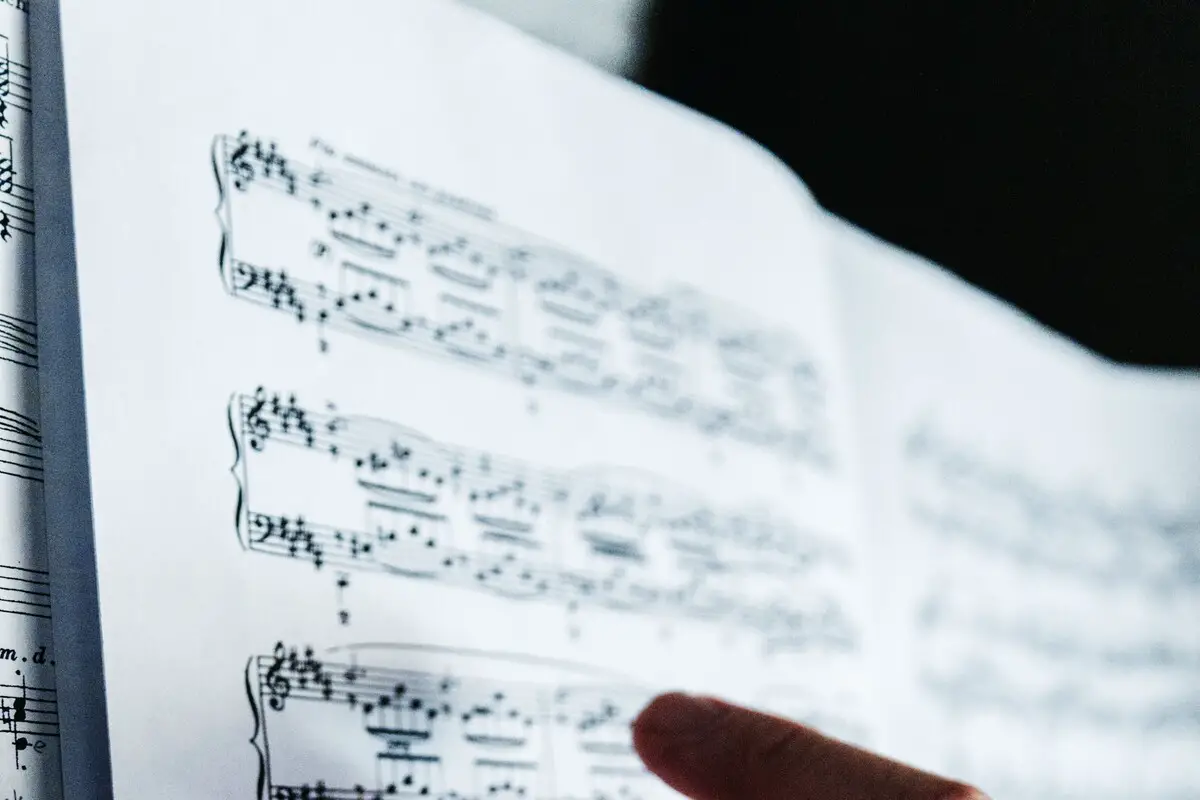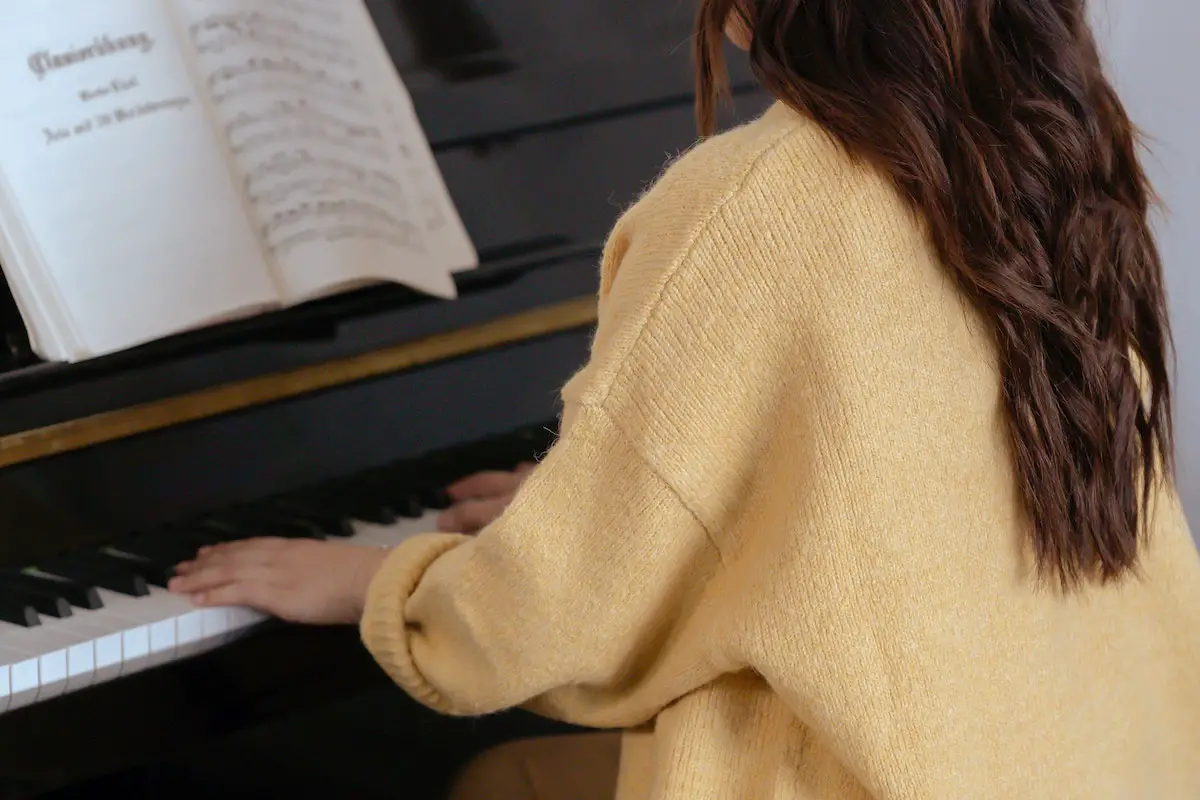Have you ever wondered about the magic behind a catchy tune—a song you can’t get out of your head? That’s the charm of the song’s melody. It’s an essential element of music that charms our senses and awakens our emotions. Let’s delve into the world of melodies and see how they shape our musical experiences, making songs unforgettable.
What is a melody? It’s a collection of musical tones grouped together, creating a single musical entity. Multiple melodies work together in most compositions, enhancing the overall musical piece.
What makes up a melody?
Pitch and duration are the building blocks of any melody. Knowing them is as essential as knowing your ABCs when it comes to creating music. A basic understanding of these elements can help you appreciate the art and complexity behind the music.

Pitch refers to the audio vibration produced by an instrument. The arrangement of these pitches forms a series of notes, and that’s where you’ll find names like C4 or D#5. Just imagine your favorite pop song – let’s say, “Bad Guy” by Billie Eilish. The tune that keeps you humming along that’s the pitch in action!
The duration of a melody is about the length of time each pitch will sound. It’s divided into lengths like whole notes, half notes, and quarter-note triplets, among others. It’s what gives a song its unique rhythm and pace. Think about a fast-paced rock song versus a slow ballad—the duration of the notes makes a huge difference!
AKAI Professional MPK Mini MK3

AKAI Professional MPK Mini MK3
How is a melody shown in sheet music?
On a sheet of music, you’ll find a 5-line staff. The position of the note on this staff indicates the pitch. Higher notes are represented higher on the staff, and lower notes sit lower. That’s how you know whether you’re hitting a high C or a low B! The duration of a note is shown by its shape. A whole note looks different from a half note, which looks different from a quarter note. So, the shape of the note on the staff gives you an idea of how long to play each pitch.
How can we create a melody?
The first step in creating a melody is choosing a key. This might sound daunting, but trust me; it’s not as hard as it seems. The key of a song is simply the collection of notes you’ll primarily use. Let’s take a quick look at the pop culture hit “Someone Like You” by Adele. It’s written in the key of A, which gives the song a unique emotional quality. So, choosing a key sets the overall mood of your melody.
After you’ve chosen a key, the next step is to create a rhythm or pattern of note durations. It’s like setting the heartbeat of your melody. This is where the durations we discussed earlier come into play. Remember, whole notes, half notes, and quarter-note triplets are all part of this rhythm mix.
How can we enhance a song’s melody?
Every good melody can be enhanced. Think of it like a burger: sure, you’ve got the bun and the patty, but what about the cheese, lettuce, and tomato? They make a good burger great! The same goes for melody.
Here are a few ways you can enhance your melody:
- Add harmonies: These are secondary melodies that play alongside the main one. They’re like the backup singers for your lead vocalist!
- Use dynamics: This refers to playing some parts louder and some parts softer. Dynamics bring emotion to your melody.
- Vary your rhythm: Don’t be afraid to switch up your rhythm patterns. It keeps things interesting!
Now, here’s a handy table of some do’s and don’ts when creating and enhancing a melody:
| DO’s | DON’Ts |
|---|---|
| Choose a key that suits your song’s mood | Don’t stick to only one rhythm pattern |
| Use various note durations to create rhythm | Don’t neglect the use of dynamics |
| Add harmonies to enrich your melody | Don’t forget to make your melody move and resolve |
| Experiment with dynamics | Don’t overcomplicate your melody with too many enhancements at once |
What’s the best way to practice creating a melody?
The best way to practice creating melodies is… well, to create melodies! There’s no substitute for the real thing. The more you try, the more you’ll learn about what works and what doesn’t.

Here are a few things you can do:
- Imitate: Pick a song you like and try to recreate its melody. You’ll learn a lot from seeing how your favorite artists do it. Ever heard of the catchy tune “Bad Guy” by Billie Eilish? It’s got a melody that sticks to your brain like glue, try recreating that!
- Innovate: Once you’ve got the hang of imitation, start tweaking. Change a note here, a rhythm there. See what you come up with!
- Create: Finally, try making a melody from scratch. It might be tough at first, but remember, even the Beatles started somewhere!
What are some key components of a melody?
When talking about melodies, there are some key components that we need to understand. This handy table gives you the basics.
| Component | Description |
|---|---|
| Pitch | The highness or lowness of a sound. Different pitches create different notes. |
| Duration | Rhythm or timing of the notes. This helps set the pace of the melody. |
| Volume | Loudness or softness of the notes. Volume can affect the emotional impact of a melody. |
| Timbre | The quality of a sound that distinguishes it from other sounds of the same pitch and volume. This gives a melody its unique character. |
If you want even more great tips and information, check out the video below.
Frequently Asked Questions (FAQ)
We’ve covered a lot in this blog post, but you might still have some questions. Here are a few commonly asked questions about melody.
How can I improve my melody writing skills?
Improving your melody writing skills comes with practice. Keep experimenting with different note patterns, rhythms, and chord progressions. Also, listen to a lot of music to get inspired and learn how your favorite artists construct their melodies.
Can I create melodies even if I can’t play an instrument?
Absolutely! Many software tools are available that let you compose melodies without needing to play an instrument. You can even hum or sing a melody and use software to convert it into musical notes.
What makes a melody catchy?
A catchy melody often has a simple and memorable sequence of notes, a distinct rhythm, and repetition. Think of your favorite song – chances are, you can hum the melody because it’s easy to remember.
Conclusion
Wow, we’ve hit a high note here, folks! I hope this post has struck a chord with you and you’ve found it as tuneful as a well-crafted melody. Remember, the key to a good melody is to keep it simple and memorable. So get out there and make some beautiful music!
Did I cover everything you wanted to know? I read and reply to every comment. If you found this article helpful, share it with a friend, and check out my full blog for more tips and tricks on melody creation. Thanks for reading, and keep making melodies that move people!
Key Takeaways
This article covered melody creation and home studio recording. Here are some key takeaways:
- Melody consists of pitch, duration, volume, and timbre.
- Home studios provide freedom, affordability, and a comfortable environment for melody creation.
- You can create melodies even if you can’t play an instrument.
- A catchy melody is often simple, memorable, and repetitive.
- Keep practicing, experimenting, and learning to improve your melody writing skills.















